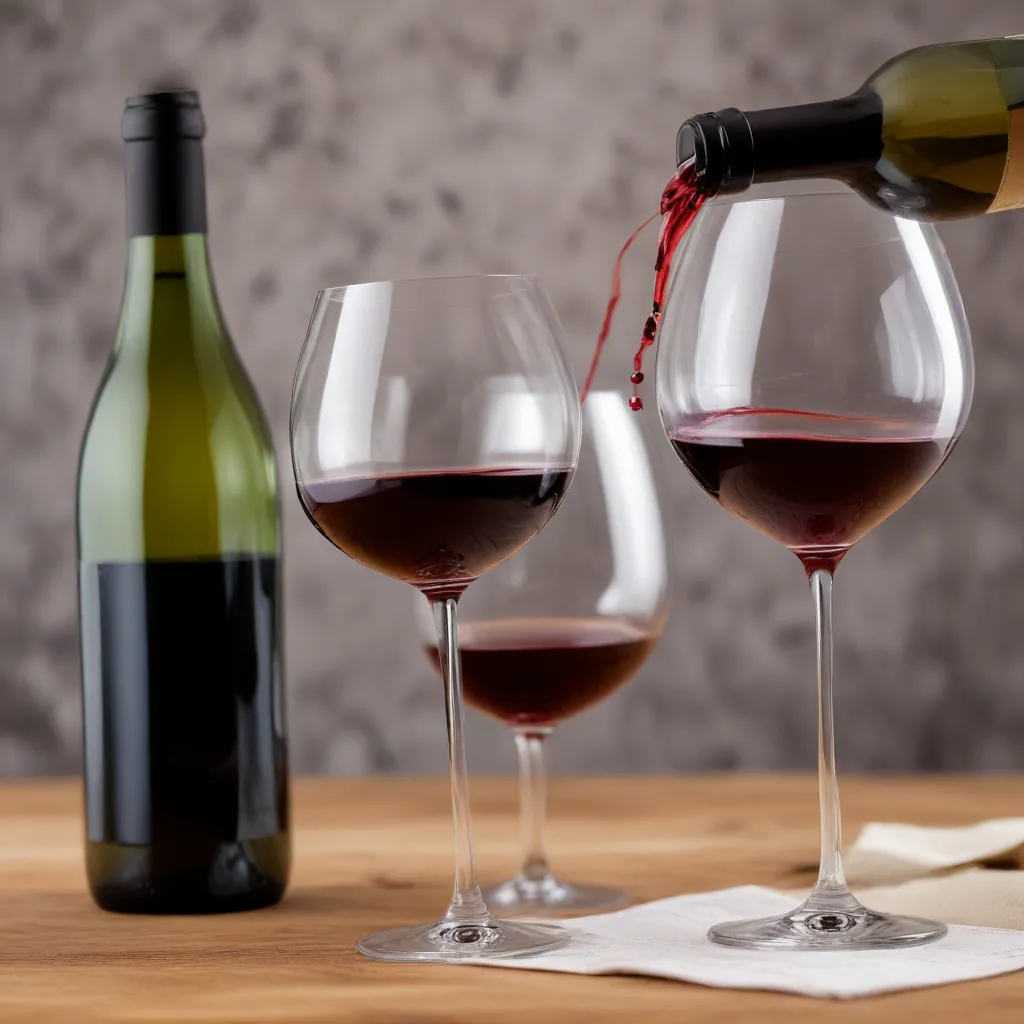
The art of food and wine pairing is a captivating dance, where flavors, aromas, and textures intertwine to elevate the dining experience to new heights. Understanding the underlying science behind this harmonious union is the key to unlocking a world of gastronomic delight.
The Science of Food and Wine Pairing
The Principles of Flavor Compatibility
At the heart of successful food and wine pairings lies the intricate balance of taste profiles, aromas, and textures. It’s a delicate balance where the acidity, sweetness, body, and intensity of the wine must complement the characteristics of the dish.
When these elements are in sync, the wine can amplify the flavors of the food, while the dish can, in turn, bring out the nuances of the wine. The principle of “what grows together, goes together” is particularly relevant, as regional dishes and local wines often share flavor affinities. For instance, a robust Tuscan Chianti can perfectly accentuate the rich, savory notes of a bistecca alla fiorentina, while a crisp Vernaccia can harmonize with a delicate chicken dish in cream sauce.
Physiological Factors in Pairing
Beyond the theoretical principles, the science of food and wine pairing also involves our physiological responses. The interplay of our senses – sight, smell, and taste – plays a crucial role in perceiving and appreciating the harmony between the two.
Individual taste preferences and psychological factors also come into play. What may delight one palate may not resonate with another. The joy of pairing lies in the exploration, where personal preferences guide the discovery of unexpected flavor combinations that tantalize the senses.
Sensory Interactions in Food and Wine
Synergistic Effects
When wine and food are expertly paired, the result is a synergistic effect where the whole becomes greater than the sum of its parts. The wine can enhance the flavors of the dish, while the dish can, in turn, reveal new dimensions in the wine.
For example, a dish with high acidity can balance out a wine’s residual sweetness, creating a harmonious interplay on the palate. Conversely, a wine with high tannins can cut through the richness of a fatty dish, cleansing the palate and preparing it for the next delightful bite.
Palate Cleansing Properties
The refreshing qualities of wine can also play a crucial role in the dining experience. A well-chosen wine can act as a palate cleanser, preparing the taste buds for the next course or bite. This is particularly important in multi-course meals, where the wine can help reset the palate, allowing the diner to fully appreciate the nuances of each dish.
Pairing Strategies for Different Cuisines
Matching Regional Flavors
When exploring food and wine pairings, honoring the regional flavors and traditional pairings can be a rewarding starting point. The principle of “what grows together, goes together” is particularly evident in the harmonious marriages of local dishes and regional wines, as seen in the Tuscany region of Italy.
For instance, a Vernaccia from San Gimignano can be an exquisite companion to a chicken dish in cream sauce, showcasing the synergy between the local wine and cuisine. Likewise, a Chianti or a Brunello di Montalcino can elevate the experience of savoring a classic Tuscan bistecca alla fiorentina.
Adapting to Dish Complexity
As cuisines become more diverse and complex, the art of pairing evolves. Navigating the nuances of spice, umami, and ethnic ingredients requires a more nuanced approach. In such cases, the wine’s acidity, sweetness, and umami properties become crucial in creating a balanced and harmonious experience.
For example, when pairing sake with Thai cuisine, the subtle sweetness and creamy texture of a nigori sake can provide a refreshing counterpoint to the spicy and bold flavors of dishes like pad thai or curries. Similarly, a kimoto-style sake with its rich, earthy notes can complement the savory essence of Korean barbecue.
The Art of Pairing Perfection
Experimentation and Discovery
While traditional pairings offer a solid foundation, the true joy of food and wine pairing lies in the spirit of exploration and discovery. By venturing beyond the expected combinations, one can uncover unexpected harmonies that delight the senses and ignite the culinary imagination.
Whether it’s pairing a sparkling rosé with spicy fried chicken or experimenting with an off-dry riesling alongside a hearty beef stew, the process of finding the perfect match can be as rewarding as the final pairing itself. The journey of pairing is a testament to the boundless creativity that emerges when wine and food converge.
Pairing Etiquette and Guidelines
Ultimately, the art of pairing perfection is not about rigid rules, but about harmonizing flavors and enhancing the overall dining experience. While general guidelines can serve as a useful starting point, the true magic lies in understanding the interplay of the senses and having the confidence to trust your own palate.
By embracing the principles of flavor compatibility, synergistic effects, and regional adaptations, one can craft pairings that elevate the meal to a transcendent level of gastronomic delight. Whether you’re enjoying a cozy evening at home or exploring the vibrant wine regions of Tuscany, the pursuit of pairing perfection promises a journey of discovery, delight, and lifelong culinary memories.
Embark on your own adventure at the Wine Garden Inn, where our estate-grown produce, gourmet breakfasts, and carefully curated wine selections await to inspire your culinary creativity and deepen your appreciation for the art of food and wine pairing.
